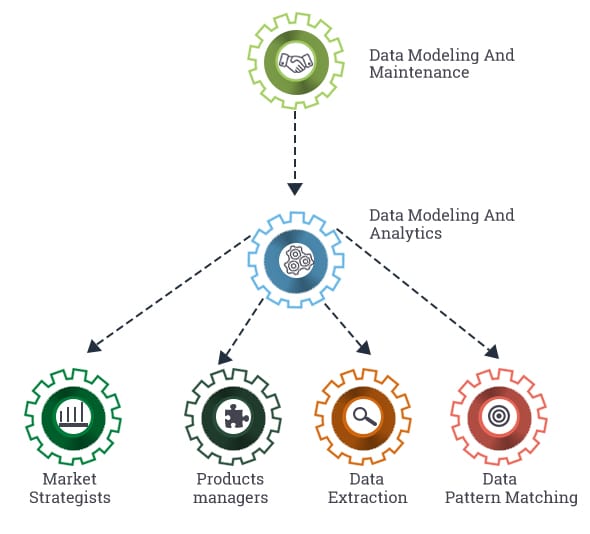With a variety of multiple different applications, databases and NoSQL databases stores, many businesses currently discover their data inconsistent, complex, leading to under-utilization, unsureness, inaccuracy, wariness, not easy to work with and less informed decision making in the business. This can frequently lead to misunderstandings, suspicion, disorganization, errors, under utilization and ultimately resulting in poor decision making for the business. As part of its data modeling services we at Biztechnosys whole heartedly work with our valuable clients to create a complete data architecture roadmap that is essentially based on best practices, industry standards and latest proven techniques. Data modeling is an analysis which determines how data is exposed to the end user. Data modeling is an integral part of any organization’s ability to analyze and extract value from its data.
Every individual who is involved, starting from collection to consumption, should know what data modeling is and how they a stakeholder can put up to a successful data modeling practice. Data modeling is an analysis of data objects and their relationships to other data objects. Data modeling is the primary step in database design and object driven programming as the designers first begin with creating a conceptual model of how data items relate to each other and then process further.
Data modeling ensures that the complete data objects desired by the database are accurately represented because wrongful omission of data will lead to creation of faulty reports and produce incorrect results.
A data model helps design the database at all levels starting from conceptual, physical and logical levels.
Data model structure assists to define the relational tables, primary and foreign keys and stored procedures.
Data modeling provides a clear picture of the base data and can be used by database developers to create a physical database.
Data modeling is also helpful to identify missing and redundant data.
Though the initial creation of data model is stressful and time consuming, but in the long run it makes your it infrastructure upgrade and maintenance cheaper and way faster.
